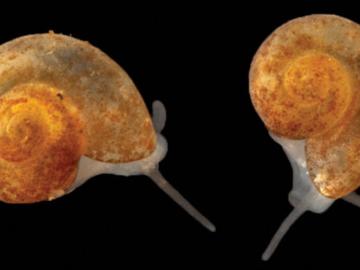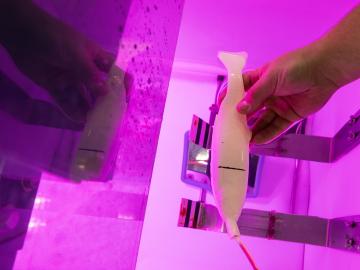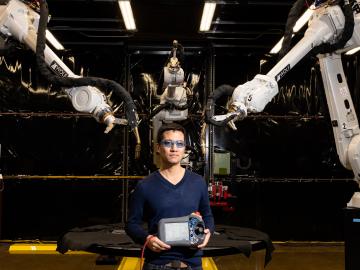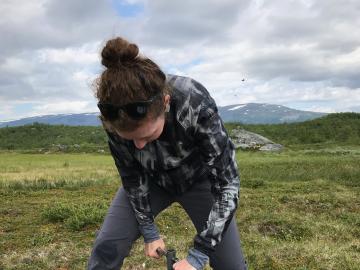
Filter News
Area of Research
- (-) Energy Science (47)
- (-) Quantum information Science (1)
- Advanced Manufacturing (3)
- Biology and Environment (71)
- Biology and Soft Matter (1)
- Computational Biology (1)
- Computer Science (1)
- Fusion and Fission (6)
- Materials (14)
- National Security (17)
- Neutron Science (11)
- Nuclear Science and Technology (2)
- Supercomputing (51)
News Topics
- (-) 3-D Printing/Advanced Manufacturing (22)
- (-) Artificial Intelligence (2)
- (-) Environment (18)
- (-) Mercury (1)
- (-) Summit (2)
- Advanced Reactors (2)
- Bioenergy (10)
- Biology (4)
- Biomedical (2)
- Biotechnology (1)
- Buildings (11)
- Chemical Sciences (3)
- Clean Water (3)
- Composites (2)
- Computer Science (8)
- Coronavirus (5)
- Cybersecurity (5)
- Energy Storage (20)
- Fossil Energy (1)
- Grid (13)
- High-Performance Computing (2)
- Hydropower (1)
- Materials (5)
- Materials Science (4)
- Mathematics (1)
- Microelectronics (1)
- Microscopy (3)
- Nanotechnology (3)
- National Security (1)
- Neutron Science (2)
- Nuclear Energy (2)
- Partnerships (4)
- Polymers (1)
- Quantum Science (4)
- Security (3)
- Simulation (1)
- Space Exploration (1)
- Transportation (17)
Media Contacts

Sometimes conducting big science means discovering a species not much larger than a grain of sand.

Hydropower developers must consider many factors when it comes time to license a new project or renew an existing one: How can environmental impacts be mitigated, including to fish populations?

Scientists at the Department of Energy’s Oak Ridge National Laboratory have developed a new method to peer deep into the nanostructure of biomaterials without damaging the sample. This novel technique can confirm structural features in starch, a carbohydrate important in biofuel production.

Each year, approximately 6 billion gallons of fuel are wasted as vehicles wait at stop lights or sit in dense traffic with engines idling, according to US Department of Energy estimates.

Peter Wang is focused on robotics and automation at the Department of Energy’s Manufacturing Demonstration Facility at ORNL, working on high-profile projects such as the MedUSA, a large-scale hybrid additive manufacturing machine.

Students often participate in internships and receive formal training in their chosen career fields during college, but some pursue professional development opportunities even earlier.

Elizabeth Herndon believes in going the distance whether she is preparing to compete in the 2020 Olympic marathon trials or examining how metals move through the environment as a geochemist at the Department of Energy’s Oak Ridge National Laboratory.

In the vast frozen whiteness of the central Arctic, the Polarstern, a German research vessel, has settled into the ice for a yearlong float.

A modern, healthy transportation system is vital to the nation’s economic security and the American standard of living. The U.S. Department of Energy’s Oak Ridge National Laboratory (ORNL) is engaged in a broad portfolio of scientific research for improved mobility

Sometimes solutions to the biggest problems can be found in the smallest details. The work of biochemist Alex Johs at Oak Ridge National Laboratory bears this out, as he focuses on understanding protein structures and molecular interactions to resolve complex global problems like the spread of mercury pollution in waterways and the food supply.


